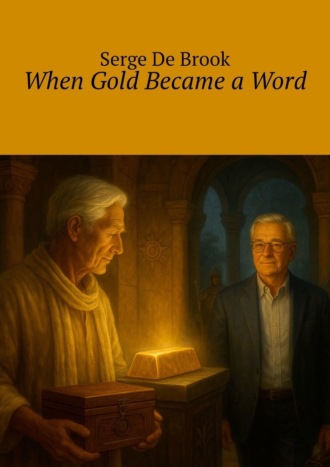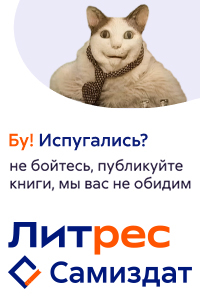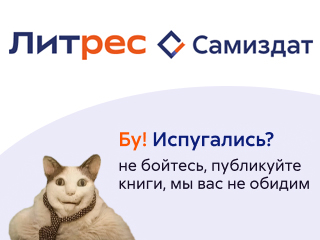
Полная версия
When Gold Became a Word. The Story of a Treasure That Found Its Voice Preface
– «We had no money,» Noela said, setting the tea on the rough-hewn table,
– «But we had something more important: the will. We just decided we weren’t going to wait any longer.»
– How did you agree among yourselves? – asked Maria, our cryptographer and economist.
– «Trust, sister. We wrote down all the participants, who helps with what – and just started. Only then did the rules appear.
Jan looked at these people and thought: sometimes the most powerful currency is intention.
India. School under the tree
In the Indian state of Uttar Pradesh, under a vast BanJan tree, we met Pranav, a former IT guy from Bombay. He left a corporate job and set up a «Village Cooperative School» that operated without money.
– «Teachers and students are all members of the cooperative,» he explained.
– «The payment is not in rupees, but in time. One hour of teaching = one hour of participation.»
Young children wrote on stone with chalk. Older teenagers taught younger ones. And nearby, women wove rugs that were sold through a shared digital platform to support the school.
– «Why did you leave the tech world?» Jan asked Pranav.
He smiled:
– I didn’t leave. I just moved the technology to where it’s really needed.
Brazil: Harvest in exchange for light
– «In the state of Bahia,» said David, our Latin America coordinator,
– «Farmers have united in an energy and agricultural cooperative. They supply surplus crops and in return receive light.
Jan was riding in an old truck with Ana Lucia, the cooperative’s coordinator. The road was dusty and hot. In the back were sacks of coffee and cassava.
– «Banks don’t come to us. The state doesn’t see us. That’s why we became our own bank,» she said, showing a digital panel connected to the blockchain.
All members of the cooperative had smart contracts, and the distribution of resources was automatic. No corruption. No intermediaries.
And again, it was not money that was at the center, but the pulse of exchange and trust.
Philippines and Indonesia. Mission in the Jungle
In the Philippines, we were met by a Mindanao tribal elder whose community was involved in a project to tokenize natural resources, including old gold deposits and land holdings.
– «We don’t sell the land. We just tell the world: it exists, and we are its custodians».
In Indonesia we visited the eco-village» Sinar» Baru,» where each participant’s digital identity was linked to their contribution to the cause, from rice planting to teaching children.
A young programmer named Joy explained:
– «Our cooperative is a DAO. But not a cold one, but a living one. Decisions are made through tokens of meaning – AUREUS. We believe that value is created when you do for others».
Moscow. Meeting at the Peking Hotel
Summer 2019. I flew to Moscow for a short layover, but learned that a meeting of consumer cooperative supporters was taking place at the Beijing Hotel. The hall was old, Soviet, with crystal chandeliers, and at the same time, alive, as if something was being born in it again.
Second row. I took notes. The financial director of the cooperative «Bright Great Russia» Alexander Paramonov spoke on stage – energetic, confident, clear.
«We went from an idea to registration with the UN!» he said, and applause rang out in the hall. «Because faith and action go hand in hand. We didn’t wait for approval from above. We became each other’s support.
After the speech, I was introduced to the chairperson of the board of the cooperative, Anastasia Bogachuk. Calm, charismatic, reserved. She listened attentively, and without interrupting, asked only one question:
– «Jan, do you yourself believe in cooperation? Or are you just creating technology»?
«I believe you,» Jan answered.
– «Otherwise, I wouldn’t have come here. And I wouldn’t have listened to every story as if it were a message.»
She smiled and said:
– «Then welcome to our family».
Dialogue with the team
Later, in an evening cafe, we discussed what we had seen:
– «What do all these cooperatives have in common?» Maria asked, flipping through a tablet with photographs.
There is a lack of fear everywhere,» David said. «People started without guarantees, without money, but with faith.»
«And most importantly, without any legal complications,» Maria smiled. «Just: „You are my light; I am your bread.“ That’s all.»
Jan listened to them and remained silent. And then he said:
– «Because real cooperation is not built on paper. But on presence. When you are there. When you are needed. When you are not obliged – but you do it».
They fell silent.
At dawn, on a plane over the Caspian Sea, I opened my laptop and typed the phrase:
– «A cooperative is not a model. It is a mirror.
– It shows whether people are ready to be together – without coercion.
– And if so – an economy of the soul is born.»
Jan felt something in my chest open up.
We weren’t just starting a project. We were giving humanity back the ability to unite without fear.
Sovereign cooperatives have emerged around the world in response to the challenges of the global economy and local problems. In this chapter, we explore how the first such cooperatives emerged on different continents – from arid deserts to high-tech eco-villages – the challenges their founders faced, and how a common mission helped overcome barriers.
Our team analyzed information available in the public space, which reveals real stories of the cooperative movement from South Africa, India, Brazil, Indonesia, the Philippines and Russia.
Through parallel plots we will reveal the «metaphysics of cooperation»: when trust between people replaces formal contracts.
The protagonist of our study, Jan Kowalski, once again sets out on field expeditions to see with his own eyes the living fabric of the cooperative movement and even to personally participate in one of these projects. His path leads through deserted villages and rural communities, all the way to a meeting with the leaders of a sovereign cooperative in Moscow’s Beijing Hotel.
Each story demonstrates that the true potential of cooperation is revealed where hearts beat in unison.
South Africa: Community Solar Power
One of the first examples of a sovereign cooperative in Africa was the energy cooperative SalTuba in Kwazakhele settlement, Gqeberha (South Africa).
Here, residents of a poor inner-city neighborhoods have taken their energy supply into their own hands. In a pilot project on public land, they installed 5kW solar panels and formed a primary consumer cooperative, with each family becoming an equal shareholder
southafricanlabourbulletin.org.
Patrick Bam, an executive member of the cooperative, explains how the ability to generate its own electricity has changed the life of the community. Previously, due to rolling blackouts (local load shedding) people were losing food due to defrosting refrigerators, household appliances were getting damaged. «We were losing a lot as a community,» says Bam, «but thanks to this project we generate our own electricity and even sell the excess to the city.»
mg.co.zamg.co.za.
Indeed, SalTuba not only freed dozens of homes from darkness, but also organized the sale of excess electricity to the municipality.
The co-op is run democratically: each household has one vote, regardless of their contribution, and decides together where to spend the proceeds from the sale of solar energy. At general meetings, members of the co-op distribute the profits – whether they invest it in expanding the solar installation (for example, increasing the number of panels from 15 to 40 during the project, or to fund other needs: a community garden, a soup kitchen, training for young people.
Young members are also involved: the co-op has given them the chance to learn how to install panels and manage the project. A young man named Lubabalo Mkhkiva has been trained in installation and is now responsible for connecting the new solar section to the grid.
As a result, SalTuba has become a model of ’energy democracy’: where the community itself owns and controls the energy source, and the benefits stay local, in the form of cheap electricity and social improvements.
The cooperative’s path was not easy. There were problems with bureaucracy at the start: city services did not issue an invoice for the sale of electricity for a long time, citing the fact that the land under the installation belonged to the municipality, and therefore it was not possible to install the necessary energy meter.
It was necessary to conduct numerous negotiations with the authorities, proving the legitimacy of the cooperative. In addition, two solar panels were stolen by unknown persons, which temporarily stopped generation
However, the residents themselves did not give up: they organized guards to protect the equipment and built trust in the neighborhood by holding explanatory talks about the importance of the project. There was also mistrust from some skeptics within the community – some did not believe that the «free sun» could provide light and income. But after the first few months of operation, the installation generated almost 9 thousand kWh, saving people about 19 thousand rand (≈$1000) and demonstrating real benefits.
This convinced even the doubters: the mechanism of trust, supported by transparency (all accounts and income of the cooperative are discussed at general meetings), turned out to be stronger than formal guarantees.
SalTuba’s experience has inspired other communities. There are now over 20 community energy initiatives across South Africa, where people collectively install solar panels or operate wind farms.
For example, in the Ekenhana settlement outside Durban, a solar community project powers a library and a classroom. And in the Eastern Cape, a community trust owns 9% of the large Tsitsikamma Wind Farm, generating a steady income from selling energy under a long-term contract with the national grid.
These examples show that even in poor areas the concept of «socially disadvantaged» energy is viable.
Cooperatives born from local needs successfully transform sunlight into social capital, strengthening people’s self-esteem and independence. This is sovereignty in practice – when a community determines its own energy and economic course, based on the consensus of its hearts.
India: Women «Sun Moms’ and Self-Governing Unions
In India, cooperative principles have been deeply rooted since the mid-20th century. Here, cooperation has become a driver of social change, especially through the involvement of women. One striking example is the work of Barefoot College in the desert state of Rajasthan. Essentially an educational cooperative, this community initiative has been teaching rural people useful skills since 1972, regardless of their literacy level, caste, or gender.
theguardJan.com.
In 2005, the college launched a course to train women solar engineers. In the first few years, more than 300 rural women became certified «solar moms’, bringing electricity to 13,000 homes across India.
By 2011, the project had expanded to 24 other countries in Asia and Africa, providing electricity to another 6,000 families using the same principle – «educate your neighbors, light up your villages.»
These achievements mean not only thousands of light bulbs lit in previously dark huts, but also colossal savings on kerosene: every year, the female energy workers of the Barefoot College save communities from burning ~1.5 million liters of kerosene by replacing smoky lamps with solar lanterns.
Santosh Devi’s story is one of many that illustrates the metaphysics of trust in action. At 19, Santosh, a Dalit girl, went to study at Barefoot College. Not long ago, she would shyly avert her eyes when meeting people from higher castes, but today she has become the first solar engineer in her area, installing rooftop panels and repairing solar lanterns.
Returning to his native village Balaji ki Dhani, Santosh installed solar panels on all 20 huts. She hooked the community up to a cooperative model: each family pays a small monthly fee – the same amount they used to spend on kerosene, batteries and candles.
Santosh ’s modest stipend as an engineer, part goes to spare parts and batteries. There are no formal contracts – there is a word of honor and mutual benefit. The result is astonishing: the poorest Dalits, who were ignored yesterday, today have become clients and partners of their fellow villager-engineer.
Santosh notes how attitudes towards her have changed: «Earlier, when I met the upper castes, I had to lower my gaze, but now they themselves come to me for help. For them, I am a solar mechanic, someone who gives light.» Light in both the literal and figurative sense: the social status of girls like Santosh has soared, as they have become bearers of unique knowledge, for the benefit of the entire community financial and social, was gaining strength in India. In 1972, the Self-Employed Women’s Association (SEWA) was founded in the state of Gujarat. It started as a trade union of street vendors and then grew into a federation of many women’s cooperatives. These cooperatives united millions of poor women – seamstresses, weavers, farmers, domestic workers – to solve economic problems together that were inaccessible to them alone.
For example, the banking system considered such women «not creditworthy» and refused them loans. What did they do? They opened their own bank in the form of a cooperative, where the women themselves became depositors and co-owners.
This bank operates on the principles of trust: no collateral, instead – a guarantee from comrades and a reputation in the community. At first, the authorities were skeptical about the idea – the registration of SEWA Bank took several years, officials did not believe that uneducated women would be able to manage finances. However, after a few years, the cooperative bank successfully operated without losses, consistently passed audit checks and won the trust of thousands of depositors.
These early victories cemented SEWA activists’ faith in the cooperative model as a path to solidarity and self-reliance. «Women have proven that cooperatives are not only a way to organize, but also a means to gain strength against the big players,» says Reena Chatterjee, one of the movement’s leaders.
In the decades that followed, SEWA organized hundreds of cooperatives, from rural farmers’ marketing associations to artisans’ cooperatives, from insurance societies to nursing schools. All were guided by a single vision: full employment and self-determination for women through cooperation.
thenews.coopthenews.coop.
Of course, the path of co-operators in India has not been paved with roses.
Bureaucracy and government pressure sometimes got in the way: cooperatives had to be registered, and legislation for a long time did not take into account the specifics of women’s associations. Only in 2012, an amendment to the Constitution of India enshrined the right of citizens to create cooperatives and their autonomy.
But even now, SEWA leaders warn that the authorities must not turn cooperatives into «an extended arm of the government»; it is important to guarantee their independence.
For example, achieving tax breaks for small cooperatives and simplifying reporting procedures are issues that women cooperative members are now discussing at the national level, consulting the newly created Ministry of Cooperatives.
Internal problems – such as disputes over leadership, lack of management skills among poorly educated members – also arise, and are resolved through training and the principle of leadership rotation. But the key lesson of the Indian experience is that when people come together on the basis of trust and equality, they can «build an economy from below,» creating their own banks, markets, energy networks, and thereby changing the balance of power. The invisible mechanism of cordial consent has enabled rural women to come out of the shadows, gain a voice and resources – without which no official aid program could have achieved the same effect.
Brazil: Argo-cooperatives against desert and monopolies
In Latin America, the idea of sovereign cooperatives is often intertwined with the struggle for land and ecological survival. In Brazil, the model cooperative is CoopCerrado, which unites small farmers and wild fruit pickers in one of the country’s most vulnerable regions, the tropical savannah of the Cerredo. The Cerredo is a huge (the size of Mexico) biome that contains 5% of the world’s biodiversity, but in recent decades almost half of it has been destroyed by agribusiness (soy plantations, cattle ranches).
Конец ознакомительного фрагмента.
Текст предоставлен ООО «Литрес».
Прочитайте эту книгу целиком, купив полную легальную версию на Литрес.
Безопасно оплатить книгу можно банковской картой Visa, MasterCard, Maestro, со счета мобильного телефона, с платежного терминала, в салоне МТС или Связной, через PayPal, WebMoney, Яндекс.Деньги, QIWI Кошелек, бонусными картами или другим удобным Вам способом.

